The content of the article
Not all people favor reptiles and snakes in particular. If a meeting suddenly arises, then it is inevitably accompanied by fear. Therefore, it is important to be able to distinguish the dangerous members of the family from the cowardly and not detrimental to humans. In today's material, we will look at a common loachy, which is not poisonous, and is much less common than, for example, a snake or a viper. We describe the external characteristics, distribution and other aspects related to the reptiles.
Description
- This variety is considered to be a family of snakes, it is not poisonous, and therefore a potent poison is not released from the teeth during a bite. The maximum that can be obtained from these snakes, puffiness and bruises. Medyanka does not belong to large-sized individuals, it grows in size up to 90 cm.However, even this aspect causes a person to be horrified when in contact with a cooper. For its relatives, it is dangerous, because it can eat itself sebezpodobnyh. Also leads the hunt for rodents.
- From the name we can conclude that, by coloring the hull, the individuals of this species are pigmented with copper. They are gray, black with gray, light gray. However, in most cases there are representatives of the family, pigmented reddish. It is believed that gray coppers dwell in the southern climatic zones. When molting begins, individuals darken and turn into dark brown snakes or even black ones instead of gray ones.
- Of the entire length of the body, the tail takes only 1/5 part. Eyes are pigmented reddish. There are distinctive signs by gender. The females are more brown, while the male half is red. Young animals are much brighter than the adult generation, but with the passage of life, the color fades. The drawing is also clearly visible, then smeared. The pattern is not a mandatory distinguishing characteristic, it may not be.
- Individual members of the family are scattered with lines and specks of black tone,while others do not have such characteristics. To date, there are about 5 signs that distinguish coppers among vipers. First, their head is not separated from the cervical region too clearly, it is flat. Secondly, the scales are large, has a play of copper hue. Thirdly, there are no poisonous fangs, the pupils are round, and in the vipers they are vertical.
Habitat
- We have already mentioned that the discussed representatives of the family are less common than, for example, vipers with snakes. Therefore, it is necessary to study the distribution, which does not include dense thickets (forest). Individuals are found in European countries, the least representative in Africa and Asia.
- Reptiles very rarely are located on the northern side, their habitat is directly related to climatic conditions and temperature. From the countries of Europe emit Scandinavia, Ireland. In Asia, snakes choose the southern side to dwell, and in Africa, the north and west.
- Considering the spread in the expanses of our homeland, it should be said that in this case the copper lives in completely different regions.It is found even in Siberia, not to mention the Moscow region and the Samara region. In dense vegetation they do not settle, but in the forests with slots are still present. Love needles, larch. Inhabits the steppes and shrub areas, clearing. Some individuals climb high in the mountains.
Nutrition
- Due to the not too large dimensional characteristics, the reptiles of this species cannot form a really impressive ration. Therefore, the menu is scanty, consists of small lizards, as well as themselves, ie, snakes.
- The menu includes rodents, a particular predilection is observed for mice, shrews and voles. The reptiles attack the little chicks of the passerine family and the offspring of rodents. The appetite of these snakes is simply atrocious, so in emergency cases they are engaged in cannibalism.
Virulence
- Even in ancient times in ancient Russia, it was believed, if a person is bitten by a snake with a copper color, it means that he is doomed to death. In the common people it was said that death comes at sunset. However, extreme measures, allegedly, could save the victim.
- The elders assured that you need to cut a piece of bitten flesh or chop off a hand. It is necessary to dispel such myths.Modern studies have shown that the individuals in question are not dangerous to humans. In addition, such a snake belongs to the family of snakes.
- Therefore, do not panic if such an individual suddenly bites you. It does not represent a deadly threat in any way. By the way, such a snake does not even bite through the skin. You will only feel discomfort and burning.
Danger to people
- Since the probability of contact is not minimized, especially for people living in Russia, it is necessary to have knowledge of what danger the meeting holds.
- This snake is not poisonous, but it emits a certain proportion of weak substances that, when released into the human body, do not cause damage. Unless a slight indisposition is felt, which is similar to exhaustion.
- There is nothing to fear, because the teeth are located in the far part of the mouth. During the bite, the snake simply can not affect them if the attack does not fall on a hand or a thin leg (for example, a nursery).
- However, even in these situations, the bee sting will seem to be a living hell in comparison with the attack of the common verdigris. Of course, the sensation is unpleasant, but man has nothing to fear.It is only necessary to treat the wounds.
Lifestyle
- The individuals in question are very thermophilic. Therefore, such snakes often choose places to build their nests in glades and glades. As soon as sunny days come, the individual crawls out of the house to bask in the gentle sunlight.
- It is for this reason that coppers have an exclusively daily lifestyle. Only in extremely rare cases, presented snakes are sent to hunt at night. When it is cool and dark, the individual prefers to stay in the home.
- The reptiles in question are in most cases tied to their nest. Therefore, they are not in a hurry to change their habitat. Most often, they settle in crevices of rocks, in old burrows of small loads, under stones and tree bark.
- If no one disturb the dwelling of the snake, she will live in it for the rest of her life. In addition, such individuals prefer to lead a single lifestyle, they do not need a company. In addition, the cooper will strongly defend their territory even from their relatives.
- The snake instantly attacks the offender, biting him and then eating him. For the same reason, in a small area you will not find two identical individuals.Only sometimes do snakes make contact with each other. It comes in the mating season.
- Copperheads do not like water, but are excellent swimmers. Only in extreme cases, they come into contact with water and they do so with great reluctance. For the same reason, the represented individuals never build their nests in damp terrain.
- Such snakes have a unique hunting tactic, due to the fact that they are relatively slow. These individuals never pursue their prey. Medyanki simply hiding in one place, after which they attack. Therefore, snakes can sit in ambush for a long time.
- The snake has powerful muscles. Therefore, during the attack, the individual holds the victim with a dead grip. Medyanka wraps around prey like a python. After that, the snake swallows it whole. In addition, such an individual has its own defensive technique, when she herself is at the site of the victim.
- Medyanka rolls into a ball, hiding his head in the center. As soon as the enemy approaches a sufficient distance, the serpent sharply attacks him. The same applies to people. Such a snake can not just hold in your hands. At the first opportunity, it pounces.
- The individual sometimes bites through the skin.Therefore, they were allegedly considered poisonous and dangerous. This behavior can be characterized by the fact that the snake is very scared at the moment. If you keep a vermin in captivity, she gets used to it. It can be taken in hand.
- As for the wild nature, in such conditions the individuals live to 15 years. Therefore, are considered long-lived. However, due to natural enemies and constant danger, in most cases they have lived no more than 10 years.
- If you provide all the conditions for keeping a snake in a terrarium, its life expectancy will increase significantly. If you suddenly want to make such reptiles, you should carefully prepare for this and learn all the subtleties of the content.
How rumors about snake poison appeared
- There is nothing difficult, we will consider this question in more detail. Rumors are taken from people who do not understand anything in snakes. Medyanka is often confused with a viper, and therefore poison is poisonous to it.
- This is logical, since poisonous reptiles are somewhat similar to the species under discussion. But the coppers have a flattened and not prominent head, while in dangerous snakes it is round and clearly separated from the body.
- Partly because of the imaginary toxicity of the coppers are often killed. Their population is declining decently, because everyone thinks there are vipers in front of them. However, it is enough to look at the format of the head and eyes (in the coppers the pupil is rounded) and everything will immediately become clear.
Medyanki have poisonous glands, but the poison is produced too little, so that it somehow affected the health of the person. This amount of poison is enough to kill small rodents and other small reptiles.
Video: Copperhead (Coronella austriaca)

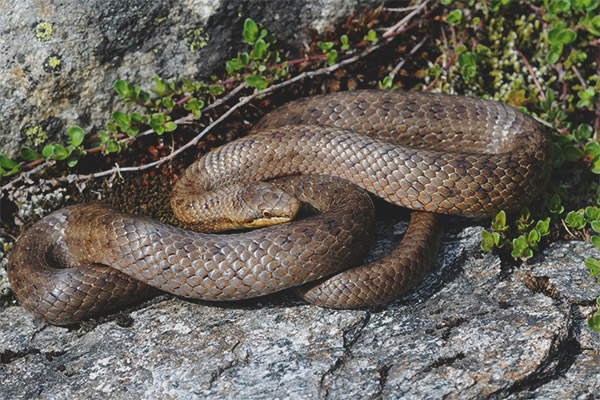
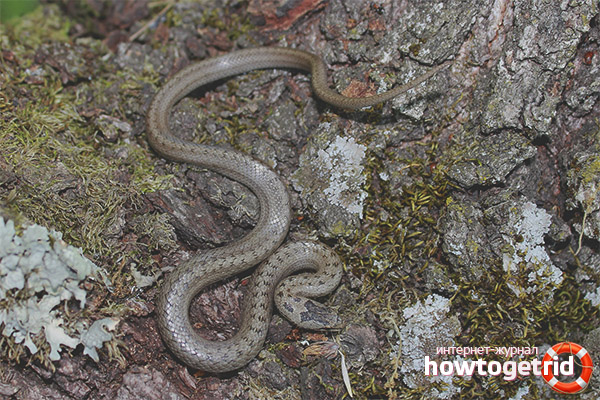


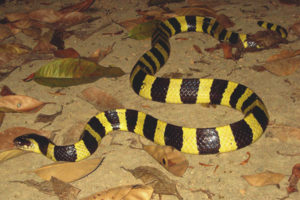

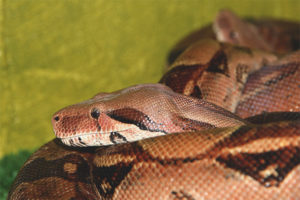
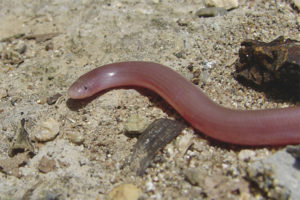

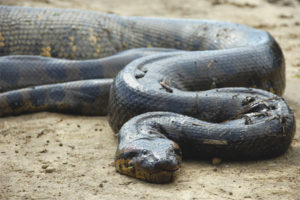

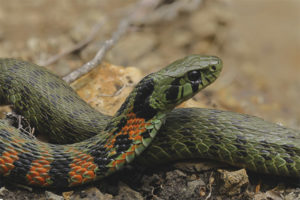
To send